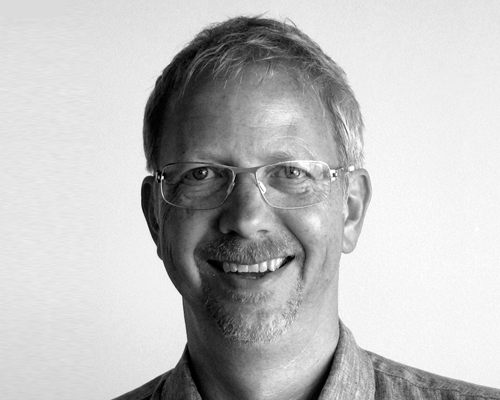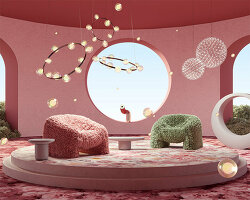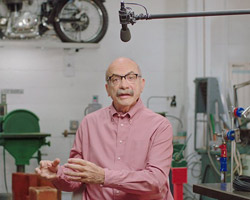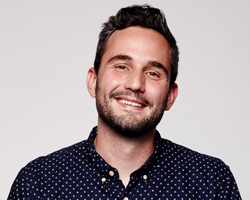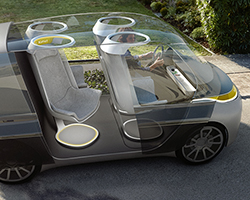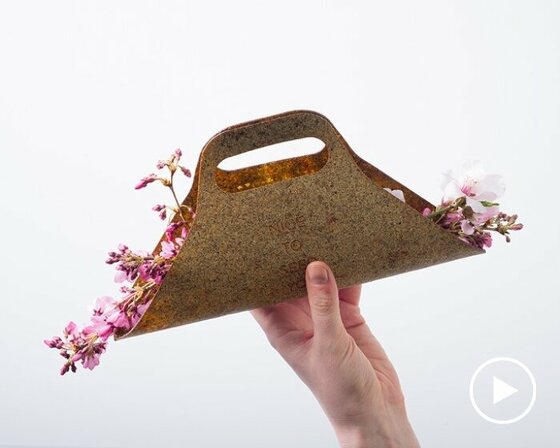interview with thomas overthun, associate partner and design director at IDEO
all images © IDEO / used with permission
thomas overthun is an associate partner and the design director at IDEO in san fransisco, a human-centered design consultancy and firm with a design-based approach to helping organizations in the public and private sectors innovate.
at IDEO, overthun holds the position of the director of design programs, and has been working for the company since 1993. prior to IDEO, overthun was part of the internal design team of the dutch electronics company philips; since then he has gone on to develop a strong expertise in the areas of contract furniture and ergonomic seating, office and consumer electronics, kitchen tools and appliances, personal care and sports products. his client list includes audible, balanced body, brooks england, cisco, eastman, fizi:k, microsoft, national panasonic, oral B, OXO, proctor & gamble, selle royal, steelcase, western digital and zyliss. in addition to his work in the telecommunications and computer products design group, he has also contributed on projects covering the broad portfolio of the company, such as consumer electronics, medical systems, domestic appliances and lighting.
in this exclusive interview, overthun talks to designboom about his history at IDEO, some of his most memorable work experiences and reflects on over two decades of industrial design.
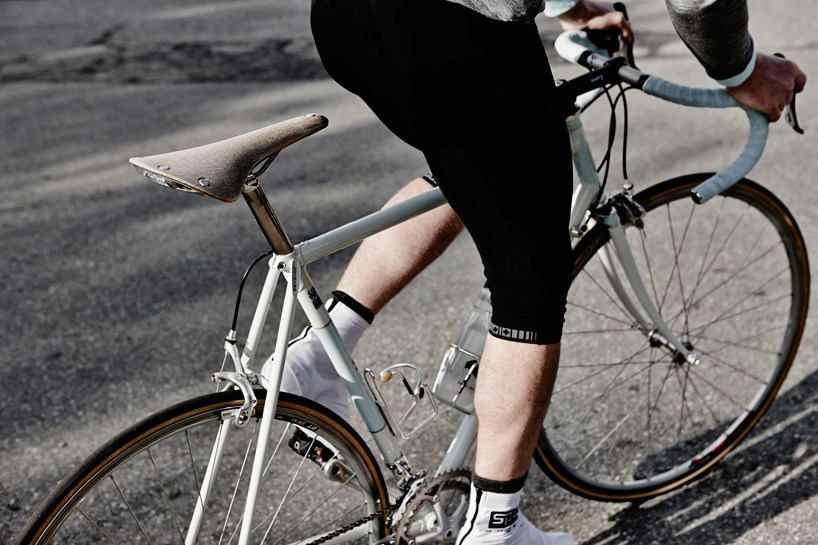
cambium C17 bike saddle for brooks
designboom (DB): can you tell us the story of how you came to work at IDEO?
thomas overthun (TO): IDEO was looking for a designer, but they weren’t looking for me. they had contacted a friend of mine, khodi feiz, when we were both working at philips in the netherlands. instead of khodi, who wasn’t ready for a change, I called them back. after an initial ‘who the heck are you’ reaction, they hired me.
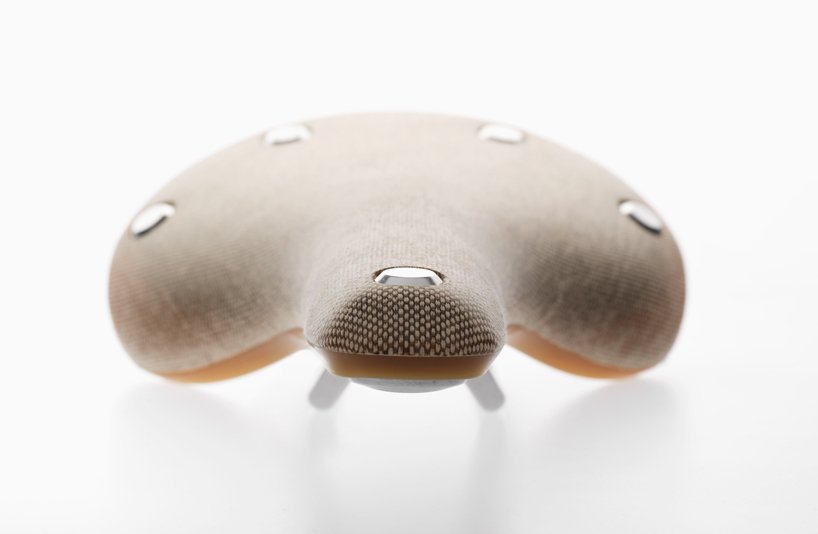
cambium C17 bike saddle for brooks
DB: how did you originally get introduced to the world of design?
TO: when I was 16, I read about luigi colani in the german TV guide. at the time, he was the most famous designer in germany. he was living in a castle, shaping crazy orange polyester cars. his spherical kitchen was much published. luigi made me want to be a designer. little did I know that wasn’t the exactly real world of design.
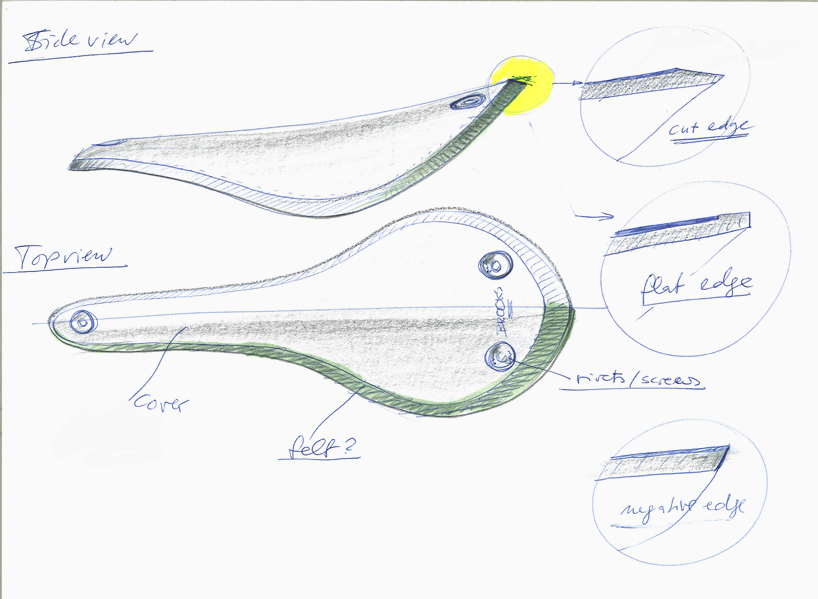
cambium C17 bike saddle sketches for brooks
DB: what was it like designing the cambium bike saddle for brooks?
TO: the brooks cambium saddle went to market more than 5 years after we finished our part of the design, because brooks had to invent a new way of making a saddle. brooks took our design further, and made it their own. it is very rewarding to have a spirited client like that – brooks is a heritage brand and we took a risk in doing something new for them. it had to be both respectful and a challenge of the status quo.
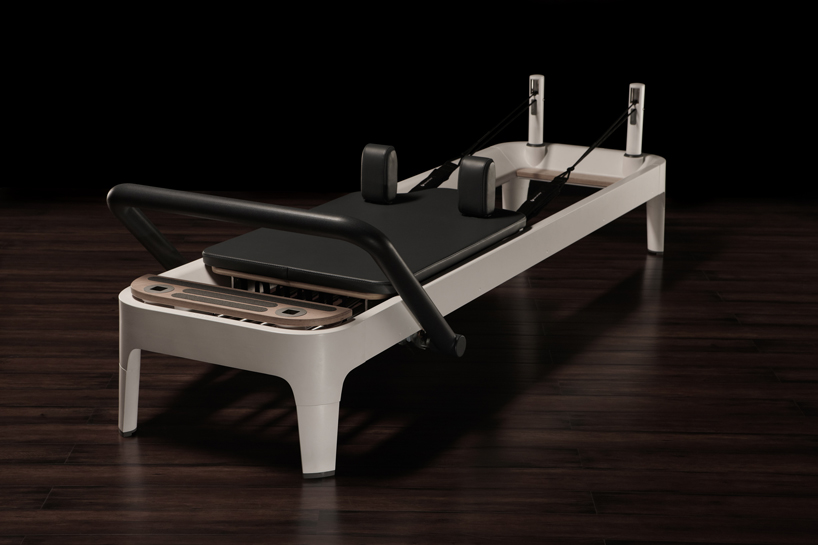
pilates allegro 2 reformer for balanced body
DB: can you explain your role as a senior design director at IDEO?
TO: a big part of my role is leading projects, inspiring teams and guiding them through tough moments. I have experience across many industries, and that helps. my strength is really pushing things to a close to where they get out on the market. I enjoy taking our early ideas and, with the team, distilling them down to a form and a condition where they can be launched, but in a way that preserves the design intent along the way.
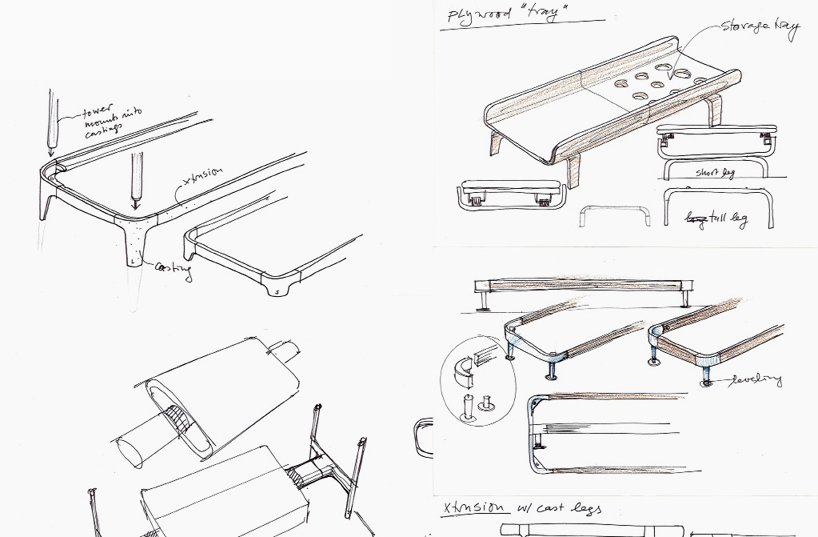
pilates allegro 2 reformer sketches by thomas overthun
DB: you’ve been part of IDEO since 1993, what has been the biggest lesson you have learned since working there?
TO: that any project can be heaven or hell. because IDEO has such a breadth of clients, I have learned not to judge projects before we get started because you never know how things are going to play out. that’s also the beauty of what we do – venturing into the unknown. we tackle the challenges that clients throw at us and they range wildly in terms of scope and topic.
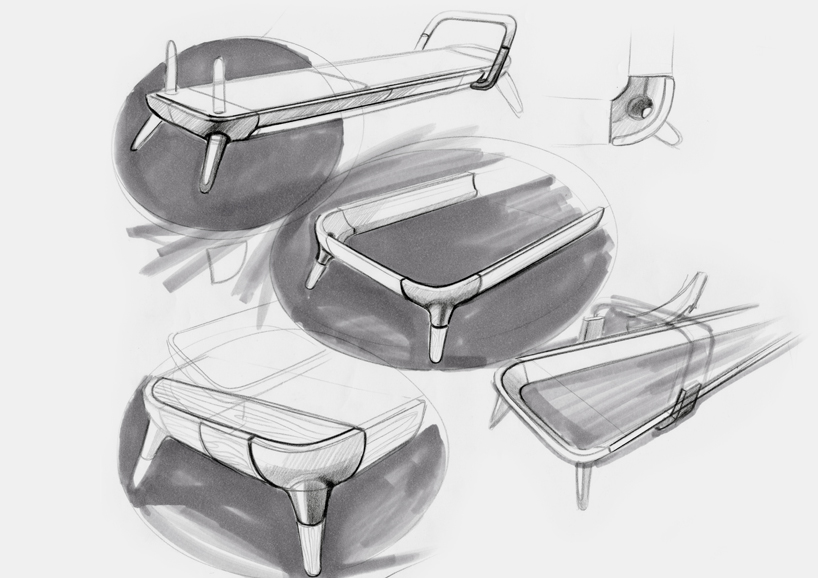
pilates allegro 2 reformer sketches by elger oberwelz
DB: reflecting on two decades of industrial design with IDEO, what are some of your favorite ‘game-changing’ designs you’ve worked on?
TO: my second only project at IDEO was the oral B kids toothbrush — kids’ toothbrushes at that time were just miniature versions of adult brushes. it was such a good challenge to figure out what would attract the children’s imagination and teach them correct brushing along the way. the balance body pilates reformer was one where the current products had lost the original spirit of the exercise, and we had to bring this spirit back together with new ideas. the zyliss kitchen tools were the largest range of products we had designed at IDEO at the time, and cooking is something I love to do. the brief for the i2i chair was giving us a lot of freedom to interpret ‘collaborative work’ through a piece of furniture.
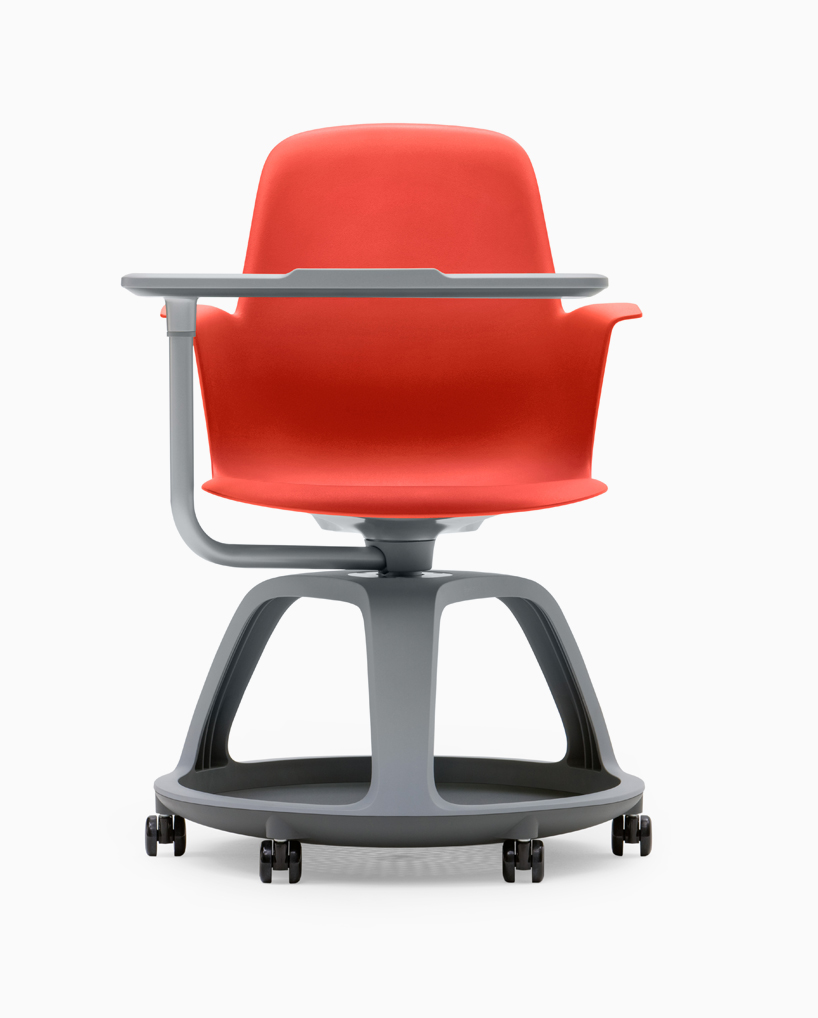
node chair for steelcase
DB: what has been the most rewarding project that you have worked on at IDEO?
TO: I’d have to highlight the steelcase node chair for its impact on education. every once in a while we come across industries that haven’t had a lot of attention. educational furniture was definitely one of those. we knew that the old, very static tablet arm chair was hated by students and faculty alike – an icon of the old way of top-down teaching. you felt stuck in it, literally and figuratively. we had to overcome that negative connotation and do something that was much more movable and adaptable. i believe the node chair really does change the student experience in the classroom.
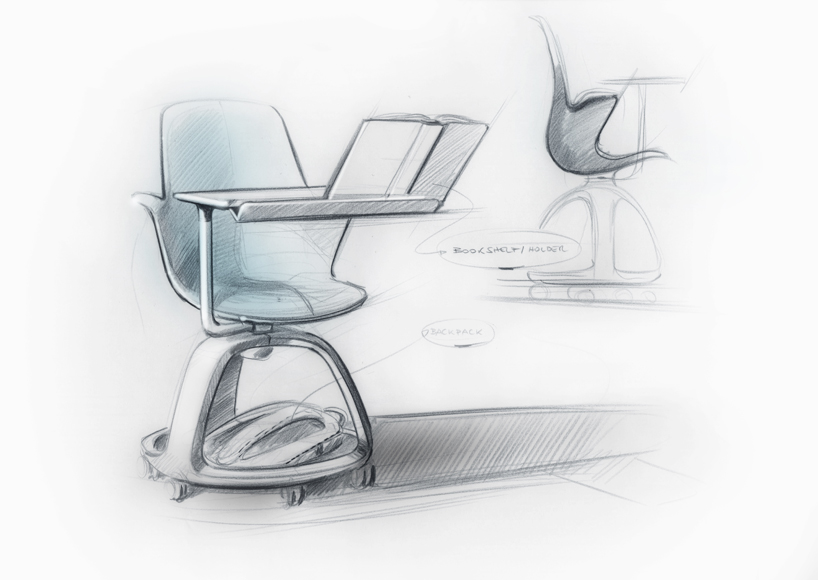
node chair sketches by elger oberwelz for steelcase
DB: how do you think your work has changed from early in your career until now?
TO: in the beginning, i used to own a project more. at some point in your career, you need to let go and give other people space to grow. I take design very personally – so it was a tricky transition. but I’m aware of the challenge and I enjoy mentoring people through that challenge. you can still own the result together.
in terms of the style of my work, it maybe hasn’t changed that much. however, the more confident I have become in my work, the more I have an interest to stay involved through the whole process. I love working with engineers and asking their opinion, because it gives you the very rational way of looking at a problem. this doesn’t mean that I always follow their advice, but it’s a good clear, starting point.
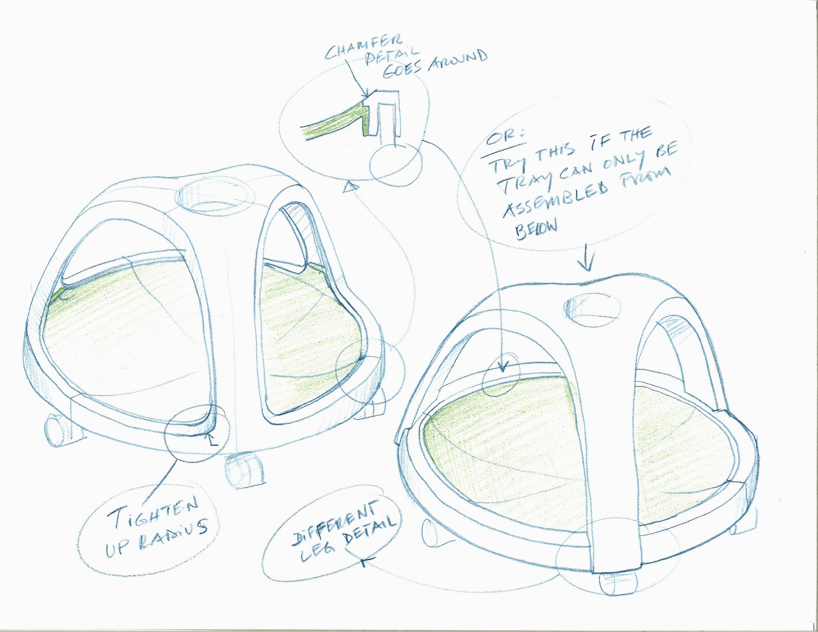
node chair sketches by thomas overthun for steelcase
DB: how often do you draw?
TO: a little bit most days, but when i really get to design things – a day of real design – my wife always notices the change in me when I come home…
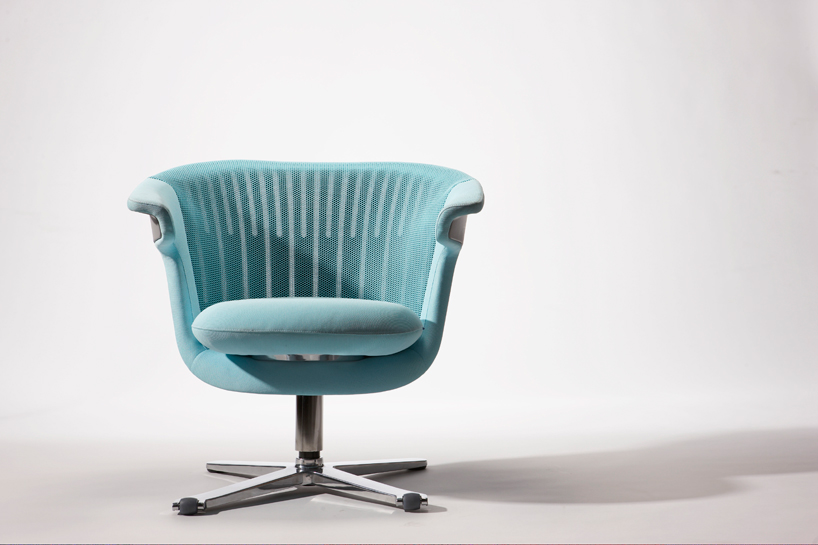
i2i chair for steelcase
DB: given the size and success of IDEO, what motivates you and the company to keep pushing the envelope for design?
TO: personally, I am very motivated by getting things to market. I also love to go to the factory and see our stuff getting made – it’s quite humbling to see the things you didn’t get quite right come off the line thousands of times.
IDEO is motivated slightly differently – there is a broader sense of impact that our work can have in the world. we are fascinated and tickled by the new challenges that clients throw at us, and it has made us redefine the limits of what design is. we are always motivated to say: we’ve never done this, can we? what would our version of a solution look like?
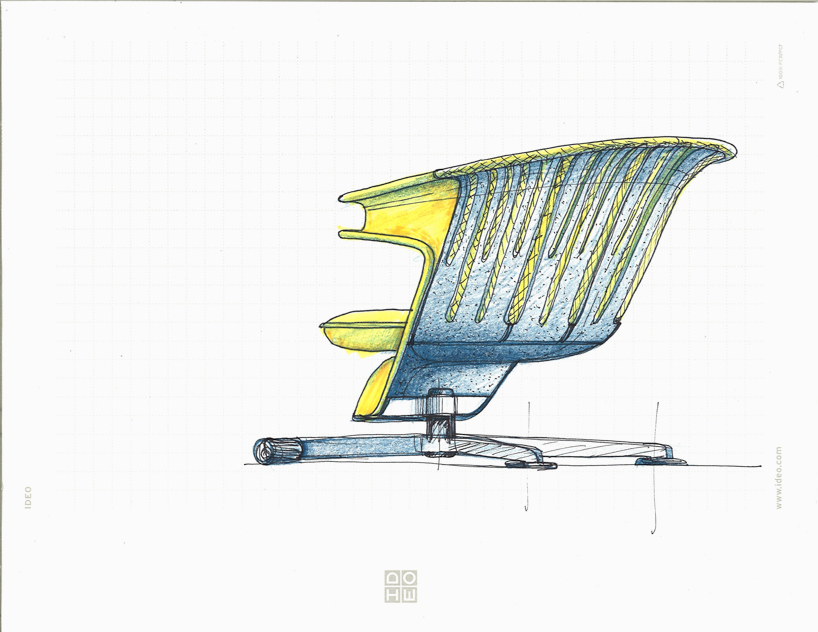
i2i chair sketches by thomas overthun for steelcase
DB: as IDEO focuses on a more human-centered design approach, in which part of the process does form come into the solution?
TO: we always start designing early. even though we have a very explicit and open process to design, we start designing whenever we can, as soon as we can. we design all the time. form will happen very early. form means playing, drawing, prototyping, finding out about materials – it should happen at any possible moment in the process if it helps you think better.
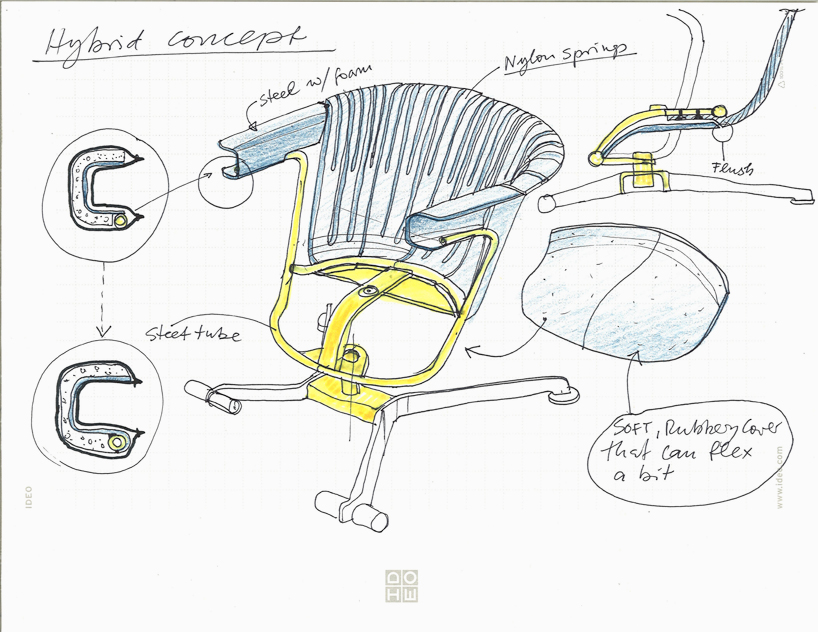
i2i chair sketches by thomas overthun for steelcase
DB: in terms of process, what stages of development do IDEO teams find themselves most invested in?
TO: IDEO can do anything. everything from phase zero projects – what should a client do with their energy and resources, to finding a factory to mold it in, and everything in between. it is really about what is appropriate for the problem the client throws at us. of course, we like to do more stages, because we believe in the coherence of design as a great asset.
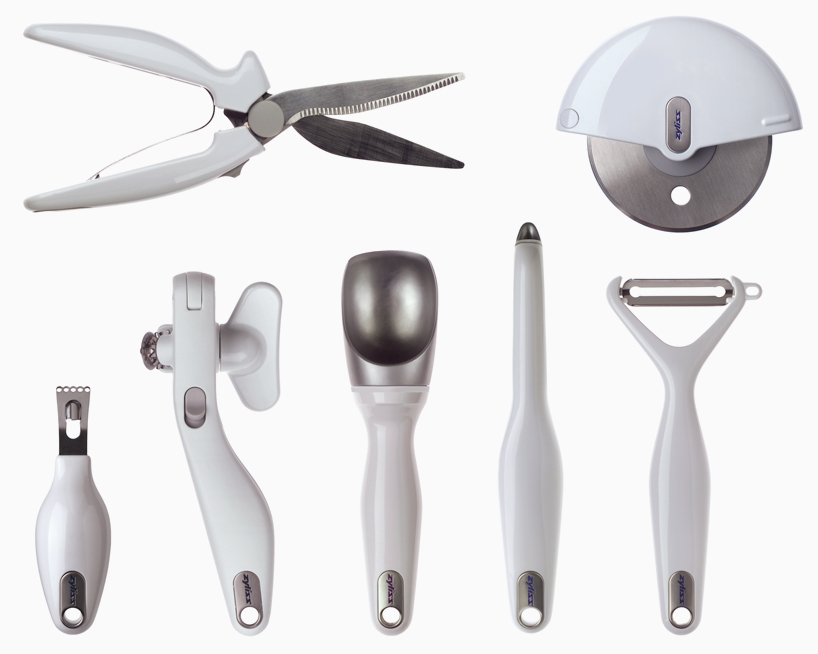
kitchen accessories for zyliss
DB: how would you define innovation?
TO: giving people something that they didn’t know they were looking for. there is the element of surprise when you are first confronted with something that is truly innovative – it will suddenly show you something that you didn’t realize you were missing.
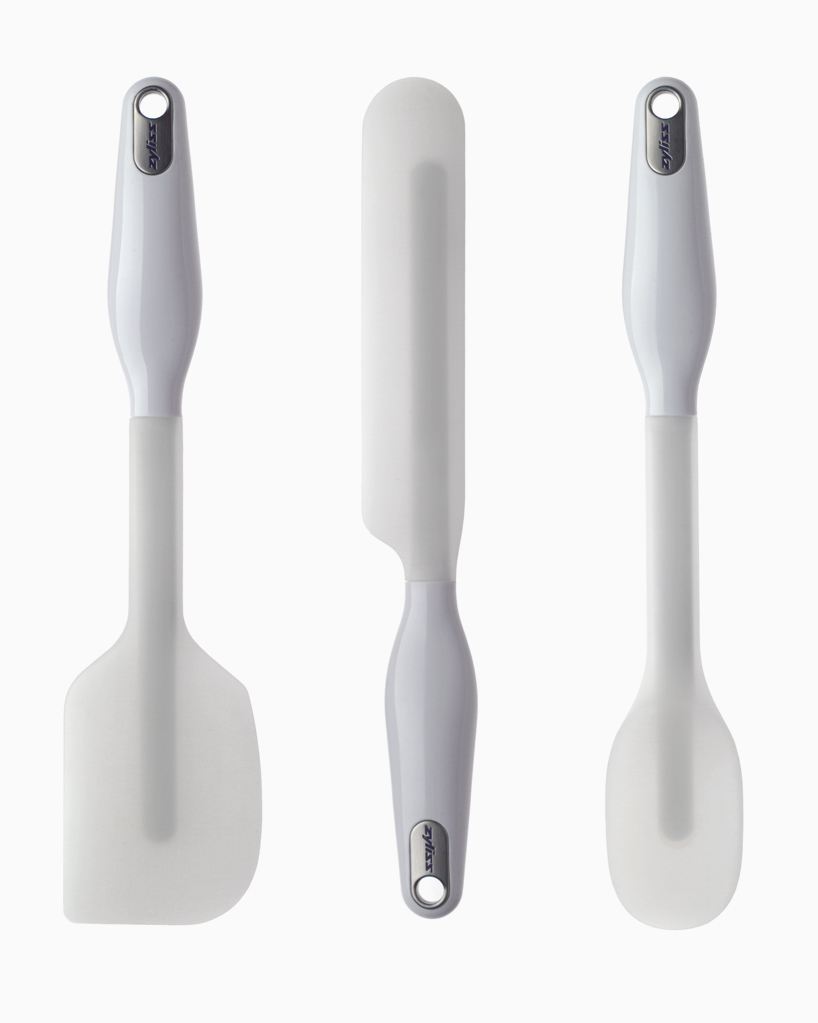
kitchen accessories for zyliss
DB: where do you see design heading in the next 5-10 years?
TO: I see industrial design in the context of many design disciplines working in concert to deliver a comprehensive and cohesive solution. I am inspired by the breadth of talent we have under one roof, and the impact we can have on a client. we have quite a few designers now who have not just the sensibility for what their colleagues do, but have core strength in more than one discipline. for example id plus brand, or ID plus UX, or ID plus engineering and manufacturing. in a way, design was broadly defined when it was filling the vacuum between engineering and marketing, and became more narrow and focused on visual treatment as human factors and other disciplines spun off. I think we are getting back to a broader and more interesting definition of what design is.
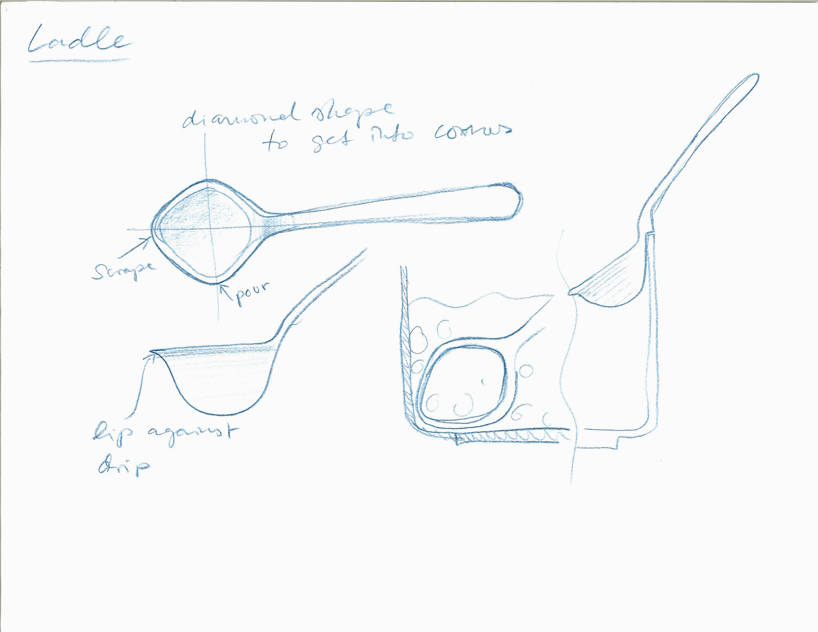
kitchen accessory sketches for zyliss by thomas overthun
DB: what mistakes should a young designer avoid when designing ?
TO: young designers often get stuck. my advice is often to switch the medium they are working in – make a model, use a different pen, take a walk. don’t try to solve it all in CAD. be optimistic.
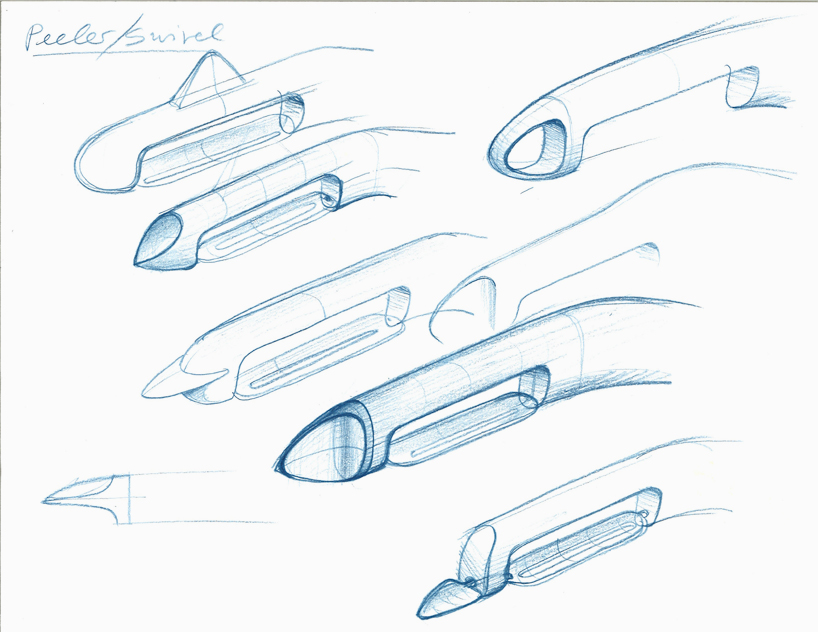
kitchen accessory sketches for zyliss by thomas overthun
DB: what is the best piece of advice you have ever been given?
TO: ‘pure geometry never bites you in the ass’ — it certainly helped balance my early obsession with luigi colani.
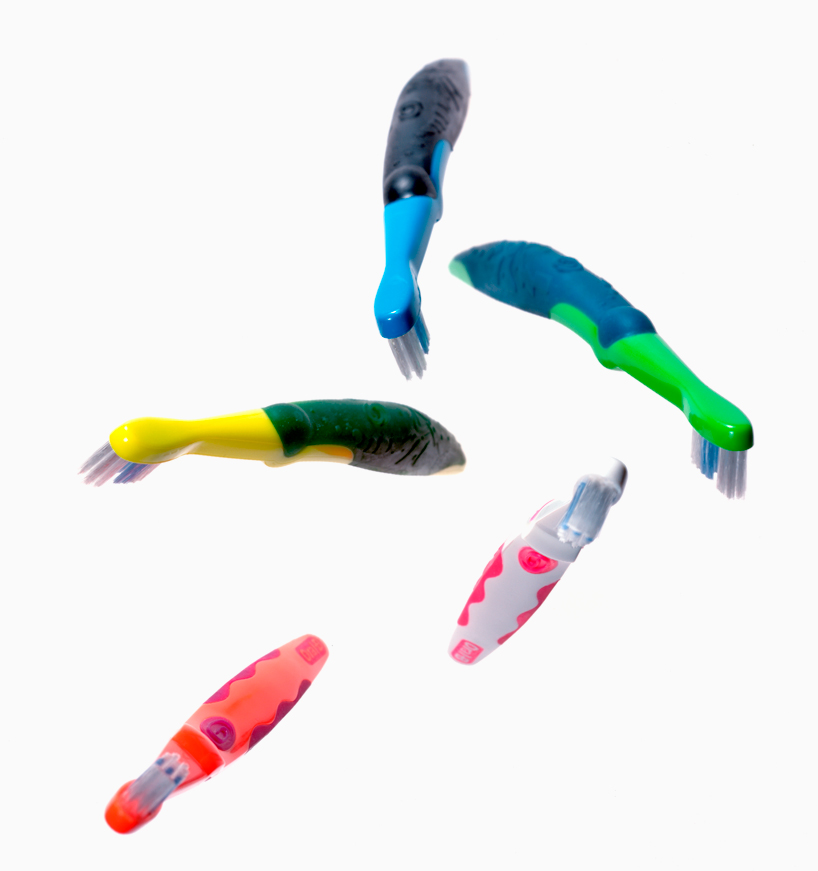
gripper toothbrush for Oral-B
DB: what is the worst piece of advice you have ever been given?
TO: ‘don’t take your work personally.’ for a designer that’s pretty much impossible.
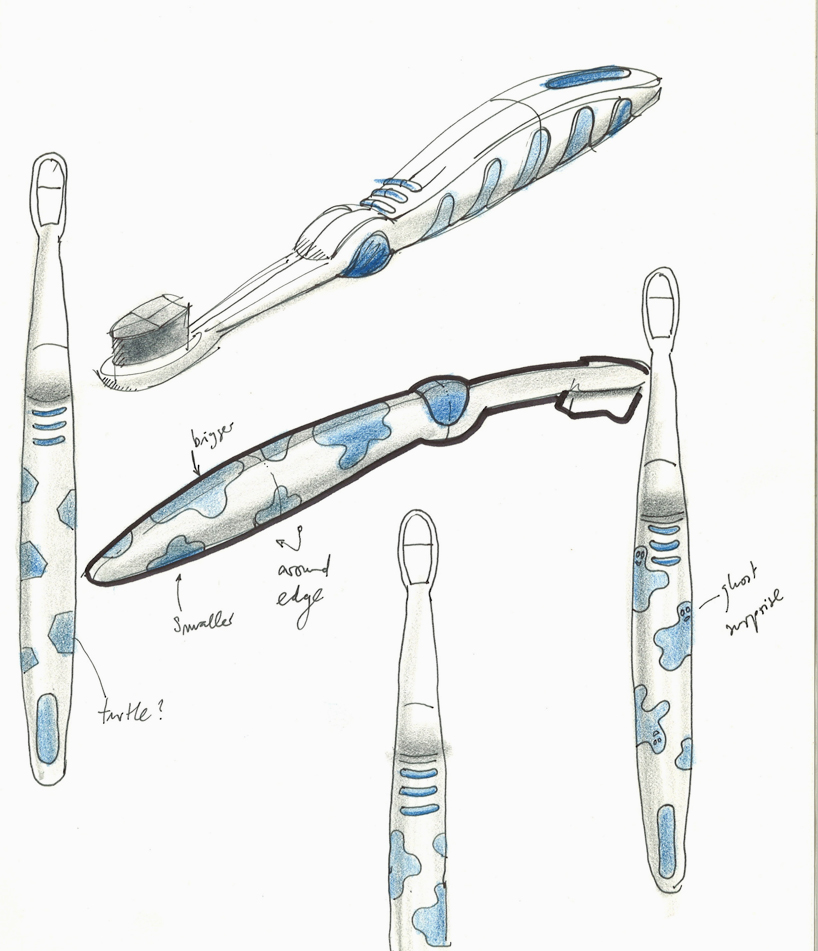
gripper toothbrush sketches for Oral-B by thomas overthun
about IDEO:
IDEO is an award-winning global design firm that takes a human-centered, design-based approach to helping organizations in the public and private sectors innovate and grow. since 1978, the san fransisco-based company has identified new ways to serve and support people by uncovering latent needs, behaviors, and desires. they envision new companies and brands, and design the products, services, spaces, and interactive experiences that bring them to life. IDEO helps organizations build creative culture and the internal systems required to sustain innovation and launch new ventures.
IDEO (20)
PRODUCT LIBRARY
a diverse digital database that acts as a valuable guide in gaining insight and information about a product directly from the manufacturer, and serves as a rich reference point in developing a project or scheme.
